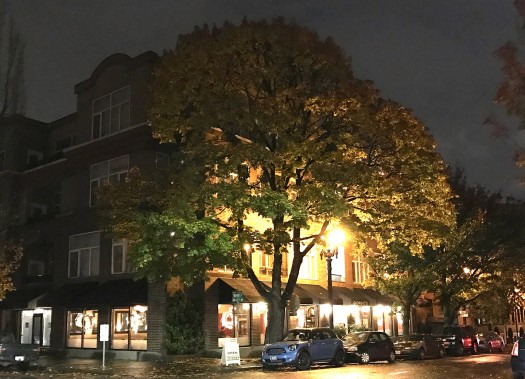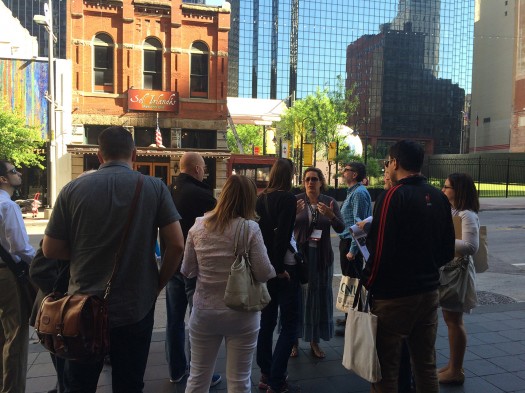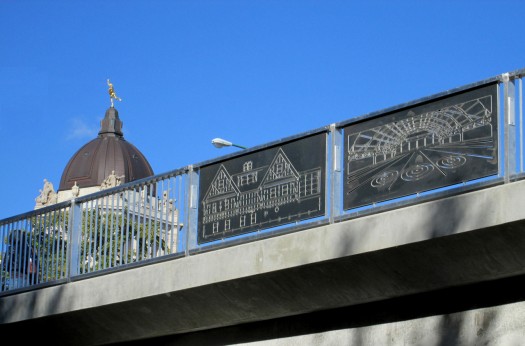Posts Tagged ‘Urban Happiness Series’
Loneliness, Isolation, and Dementia: Walking down our odds of disconnection
In this week after the most contentious U.S. presidential election of my lifetime, millions of us are feeling lonely, regardless of which way we cast our vote. Loneliness is not the result of being alone, but rather the feeling of being disconnected. Now more than ever, all that connects us to common ground – and…
Read MorePlaceMakers’ Intrepid Inside-Baseball Highlight Reel from CNU23
Having just wrapped up what may have been our favorite CNU ever, in Dallas on April 29 through May 2, we want to share some of the ideas that resonated the most with us. The topics below are snippets of great insights from many voices, including the likes of Andrés Duany, Fort Worth Mayor Betsy…
Read MoreBlack Friday: Get your gorilla on
We’re happy when we go for a run. We’re even more happy when we go for a run in a gorilla suit — at least according to Roko Belic, director of the award-winning documentary, HAPPY. That’s because some change is gonna do ya good. Which is one of the many reasons that we placemakers advocate for immersive…
Read MoreConnections, Community, and the Science of Loneliness
On my last trip to see my aging parents, I was struck again by the loneliness that comes from diminished connections. They are both inspiring people, and in their younger years were notably adept at making connections with and for others. And at helping people see the good in each other, in themselves, and in…
Read MoreQuébec City: La ville de l’amour dans la belle province
Feeling particularly grateful that winter in Winnipeg is finally over, I’m thinking about some of my happy places. What’s more romantic than Paris in the spring? It’s a question that’ll get you 26 million hits on Google, so I won’t dive in. Romantic cities will get you 53 million hits, with Paris, Boston, Venice, and…
Read MoreHappy City Highlights
Ever had one of those doctor’s visits in which your physician questions you in great detail about your family medical history? Trying to tease out the nebulous connections within your DNA to explain certain strengths, weaknesses, and anomalies. And then he uses that connecting thread to help solve something that’s been bothering you? Charles Montgomery…
Read MoreConnections, Community, and the Science of Loneliness
On my last trip to see my aging parents, I was struck again by the loneliness that comes from diminished connections. They are both inspiring people, and in their younger years were notably adept at making connections with and for others. And at helping people see the good in each other, in themselves, and in…
Read More
Creative Placemaking:
From here until now
We’ve been talking for the last few weeks about how happiness and health are generated or depleted by the way our neighbourhoods, towns, cities, and rural landscapes are developed – here, here, and here. We’ve been discussing these ideas in national terms, looking at indices and trends. During this study, I couldn’t help but reflect…
Read MoreUrban Happiness Index, Expanded
Hazel Borys’ ideas on the Healthy Places Index yesterday brought to mind some of my own thoughts on the matter — thoughts in excess of what might reasonably be tolerated in the comments section. Thanks to PlaceMakers for providing me the opportunity to share them here. On Saturday at a used bookstore, I picked up…
Read MoreUrban Happiness Index Revisited
A couple of weeks ago I floated some ideas on a national Urban Happiness Index. Similar to Gallup-Healthways Well-Being Index and Bhutan’s Gross National Happiness index, which is being contemplated by China, an Urban Happiness Index would tie satisfaction and wellbeing to the form of the built environment. Perhaps an alternative idea would be the…
Read More




